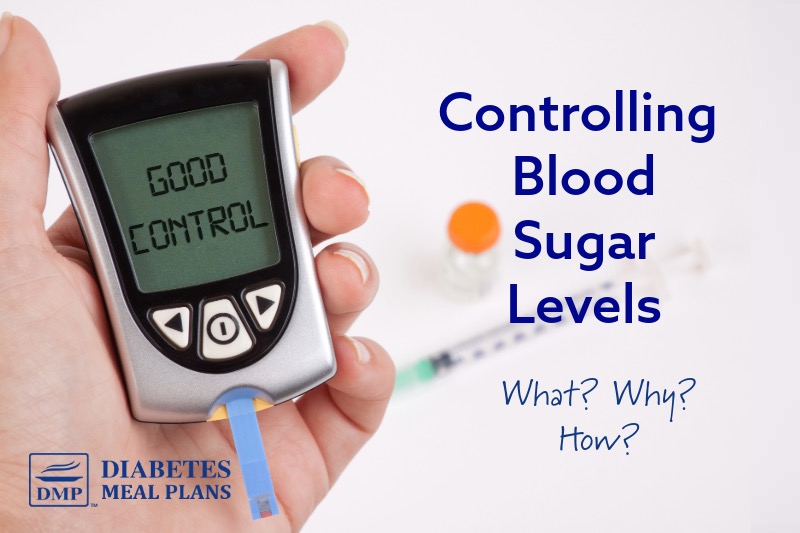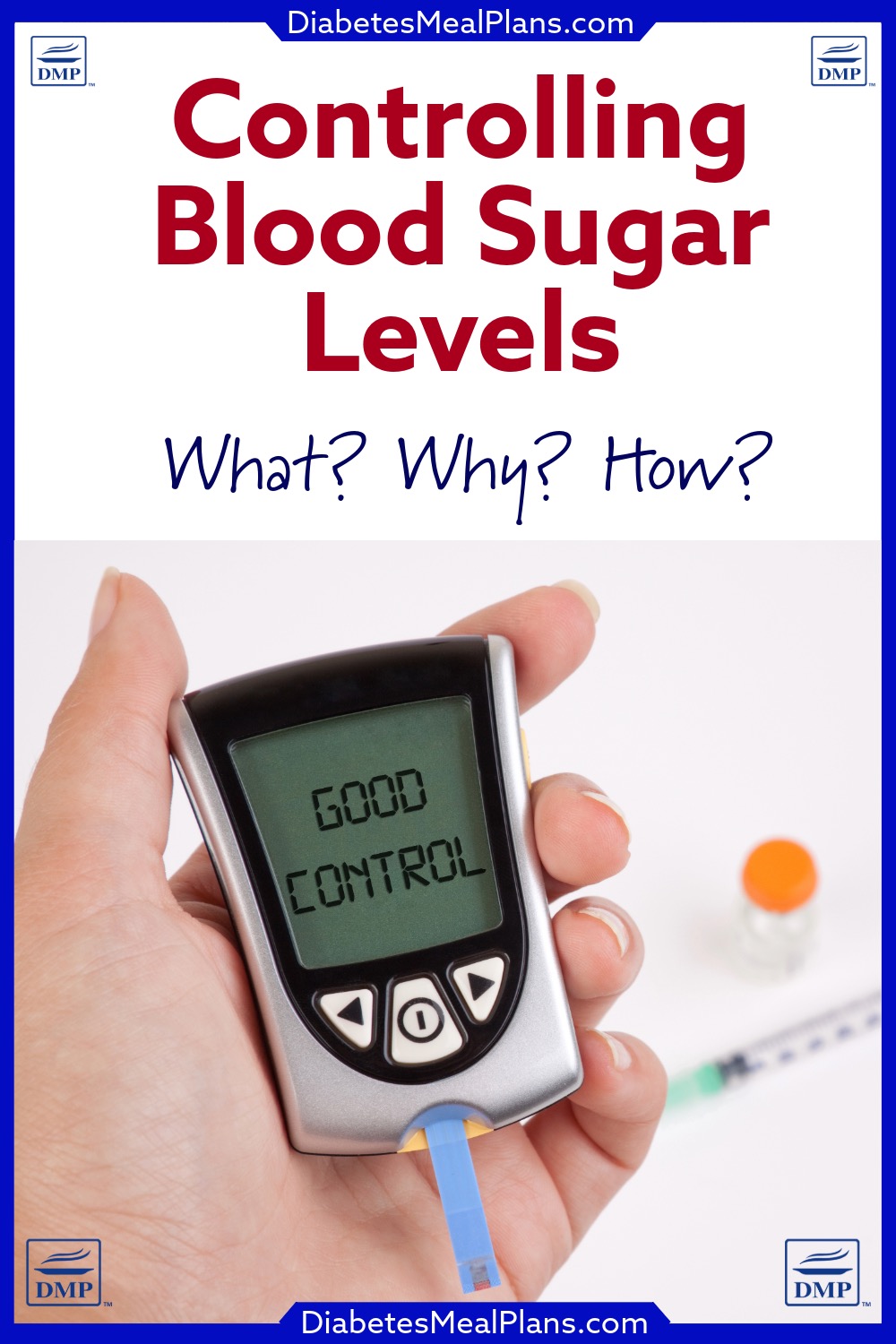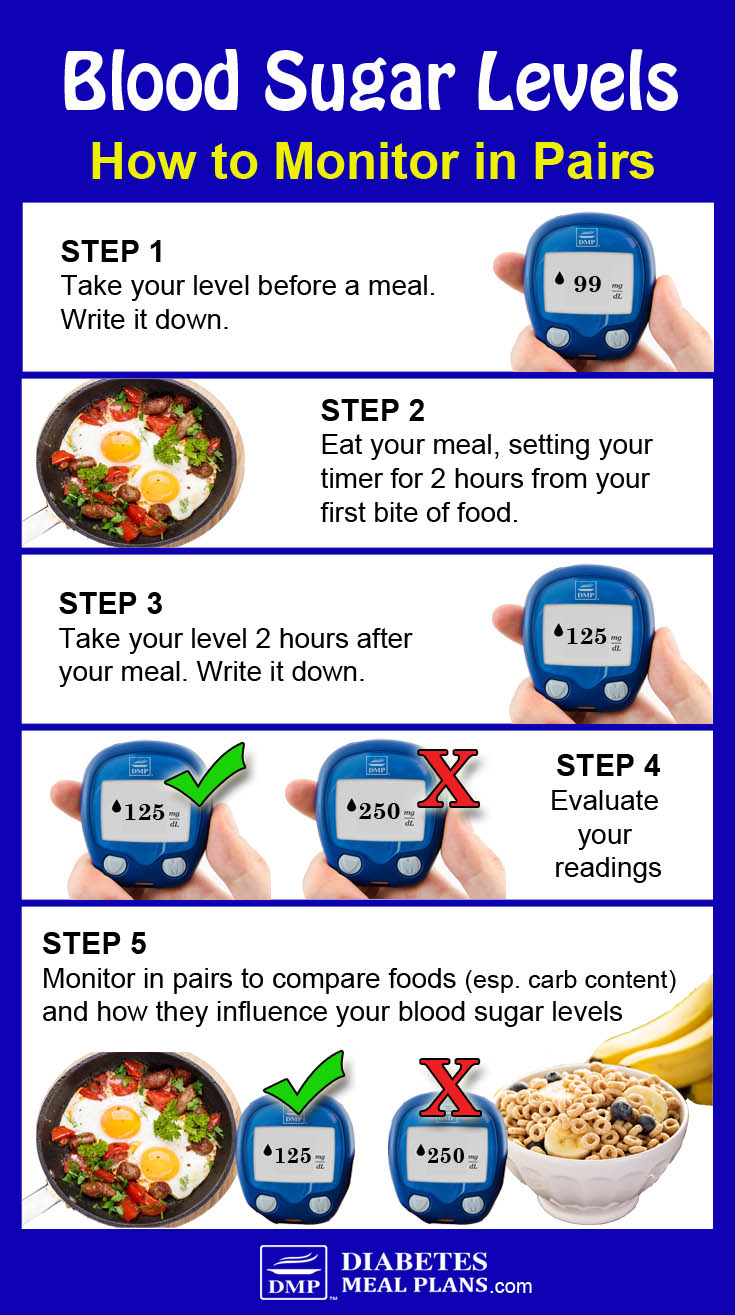Newly diagnosed type 2 diabetes and not sure what all this talk about controlling blood sugar levels actually means?!
It can be hard enough getting your head around what normal blood sugar is and when you need to test, let alone controlling blood sugar levels!
It can all seem overwhelming. So just remember to breathe, you’re not alone here. And after reading this, you’ll feel a lot better!

What Does It Mean To Control Blood Sugar Level?
What it means is that you want to get your blood glucose and A1c as close to normal (non-diabetic) as possible and maintain it at normal levels, too.
Tightly Controlled Diabetes
When your diabetes is ‘tightly’ controlled or ‘well’ controlled, you will be able to keep your blood glucose within the normal range all the time, or at least most of the time.
For newly diagnosed diabetes, or if you’re not eating a good diet and exercising, then you may initially find this difficult to do.
It takes a bit of work to gain tight control of blood sugar levels, but it is worth the effort because you want to avoid those nasty complications that can develop when high blood sugar levels run wild for too long.
Uncontrolled Diabetes
If you’re still drinking soda and eating donuts, or just relying on medications without doing anything else, then chances are your diabetes is ‘uncontrolled’ or ‘poorly’ controlled.
What generally happens here is your blood sugar levels are all over the place, or they are constantly high.
For example, you might find that your blood sugar level post meal is 140 (7.8) one day and the next it is 180 (10.0) or 220 (12.2)—in some people it’s even higher! This is not under control.
While it is normal for blood sugar levels to fluctuate, if your blood sugar level is going above 140 (7.8) after meals all the time, then it is not under control.
You want to aim to have levels under 140 (7.8) all the time, because anything above this increases your risk of diabetes complications.
We’ll get to normal levels and testing in just a second…
Why are we listing two different numbers? 140 (7.8)
We have readers all over the world!
In the US, mg/dL is used so you’ll see numbers like 140, 180, 200.
In Canada, Australia, the UK and other places, mmol/L is used so you’ll see numbers like 7.8, 10.0, 12.2.
We always list both numbers so our readers understand what’s applicable to them, depending where they live!
How To Gain Better Blood Sugar Control?
Diet
Diet and nutrition are the most important part of your treatment plan! Even without doing anything else, if you get your diet and nutrition right, you will achieve normal blood sugar and A1c levels.
Here’s a few important tips to get started:
- Lower your carb intake – this is the fastest, easiest way to lower blood glucose and take strain off the pancreas. How many carbs you eat per day is one of the most critical aspects of good blood sugar control, since carbohydrates impact blood sugar more than other macronutrients for diabetes.
- Choose the right carbs, using this guide on healthy carbs.
- Eat a whole foods, nutrient dense anti-inflammatory diet, it really is the best, healthiest way to eat long term and get the best results.
Exercise
- Aim for 30 minutes of exercise per day.
- Take a short walk after meals or stand and do 10-20 squat exercises. Exercise after meals is smart exercise, as it helps clear glucose from the blood stream so it moves into the muscle cells.
Test, Test, Test
You have to get into the habit of testing your blood glucose often. Monitoring blood sugar levels at home, will give you immediate feedback on how foods affect your blood sugar so you can make adjustments.

What Are Normal Blood Sugar Levels?
Let’s take a closer look at some general blood sugar goals:
| Timing | Target mg/dL | Target mmol/L |
|---|---|---|
| Fasting (morning) | Under 100 (ideal, normal level) Under 110 (good) Under 130 (okay) | Under 5.6 (ideal, normal level) Under 6.1 (good) Under 7.2 (okay) |
| 2 hours after a meal | Under 140 (ideal) Under 180 (okay) | Under 7.8 (ideal) Under 10.0 (okay) |
| Before bed | 100–140 | 5.6–7.8 |
Aiming to achieve the ‘ideal’ ranges is the long term goal, as these are considered normal healthy blood sugar levels and will protect your long term health.
It can take a while for levels to normalize, particularly morning blood sugar levels— so be patient, follow a quality, proven nutrition program, and things will come on track.
How Often To Test?
Most people monitor 1-2 times daily – fasting and 2 hours after the biggest meal.
But, there is wide variability on how often to monitor depending on the state of your diabetes and treatment.
For instance, those taking mealtime insulin will have to check their sugar at least 3-4 times per day as numbers may determine the amount of insulin given. While others with much better control may only check a few times per week.
If you’re newly diagnosed or trying to gain better control, it can be helpful to monitor more frequently.
One thing that is helpful with mealtimes is “monitoring in pairs.”
The idea behind this is to detect the impact something has on blood sugars, particularly a meal.

To monitor in pairs you check your levels before, then 2 hours after a meal. It’s a great way to get an indication of the effect of foods and the amount of carbs you’re consuming.
If there’s more than a 40-point (2.2 mmol/L) rise, it suggests you’ve eaten too many carbs or the wrong type of carbs for your body.
And of course, your overall goal is to get those numbers to normal healthy blood sugar levels, which you can do by reducing your carb intake, along with modifying other factors such as stress, sleep, exercise, and medication if needed.
Conclusion
Managing blood sugar levels may feel overwhelming at first, but as your knowledge and understanding grows, it becomes much more manageable.
Start by focusing on small, consistent changes—reducing your carb intake, choosing nutrient-dense whole foods, incorporating daily exercise, and testing your blood sugar regularly.
These steps form the foundation of good diabetes management, helping you move closer to achieving normal blood sugar and A1c levels.
Remember, progress takes time. Stay patient and committed, knowing that every positive choice you make brings you closer to better health.
By understanding your body and making informed decisions, you can regain control and protect your long-term well-being.
You’re not alone in this journey—we’re here to support you and you will find lots of useful information on our site.
If you do need extra support, consider taking the T2Diet Program, or joining us as a member—we’ll help you get things under control much faster, and you won’t be left to figure it all out by yourself!



Miguel Angel Ruiz
Hola, my name is Miguel Angel Ruiz and I’m . I recently had tests done on my bood sugar a1c level and my blood pressure. My blood pressue was 157/100 and my blood sugar was at 5.9 but it has dropped 1 point. My Cholesterol level is at 120 and my MD tells me if I do not lower it , than I can have a stroke or a heart attck. I’m going to follow your professional advice.
Elias Ramos
Can You Please Send Me The; Type 2 Diabetes Blood Sugar Levels Chart Book. I’m 63 Years Old, and I Live by myself.
Jedha
Sorry Elias, we don’t send out hard copies. You can find similar info here.